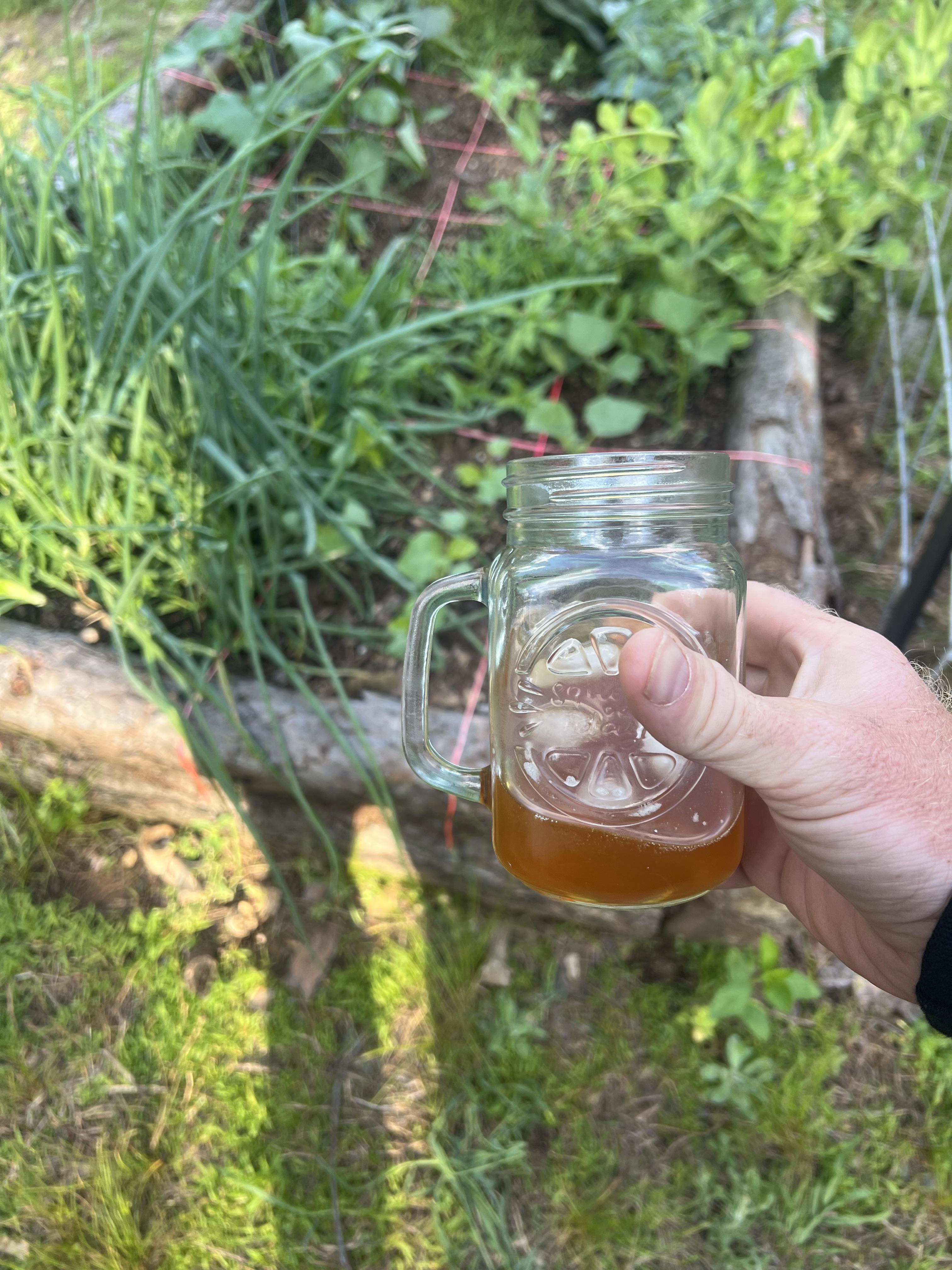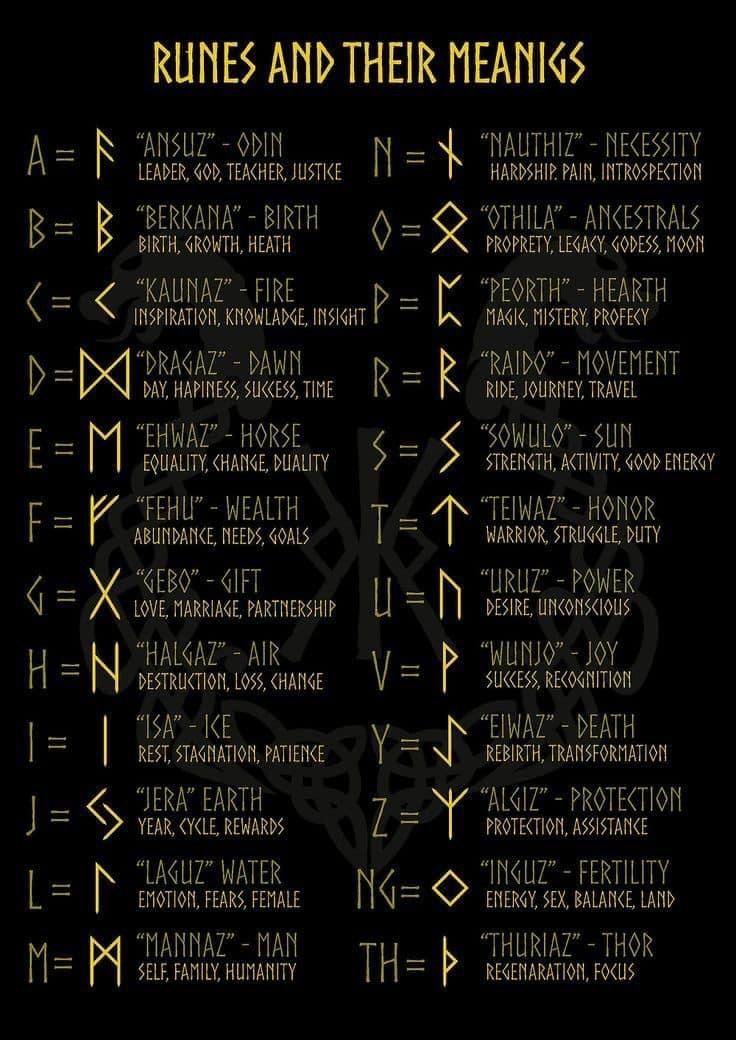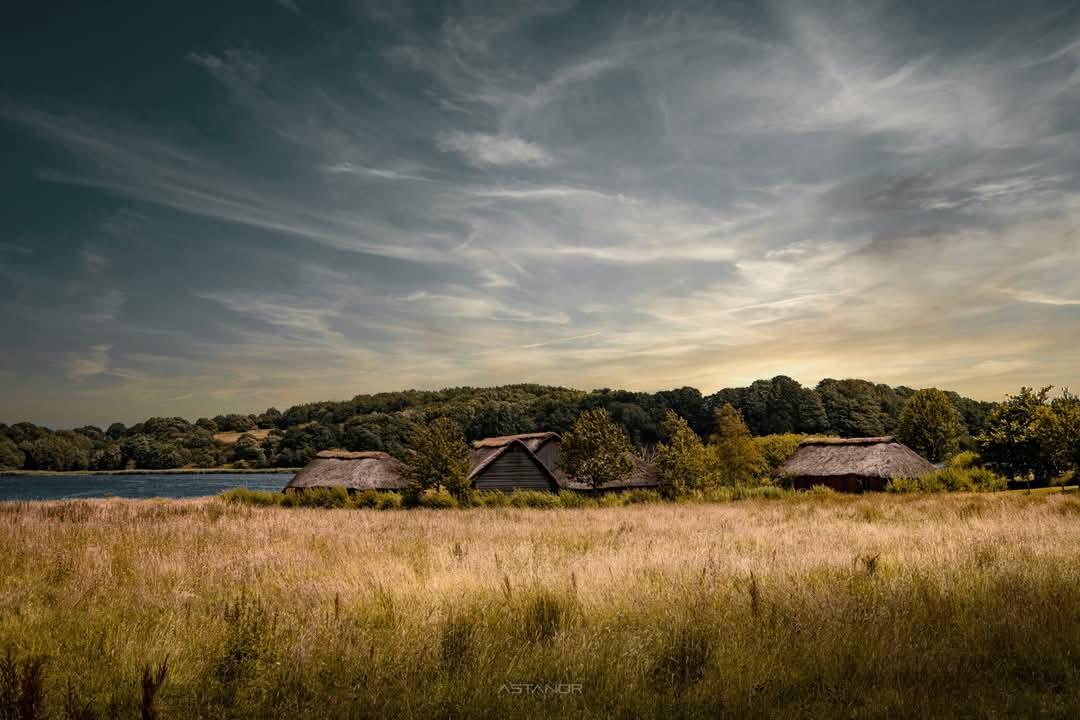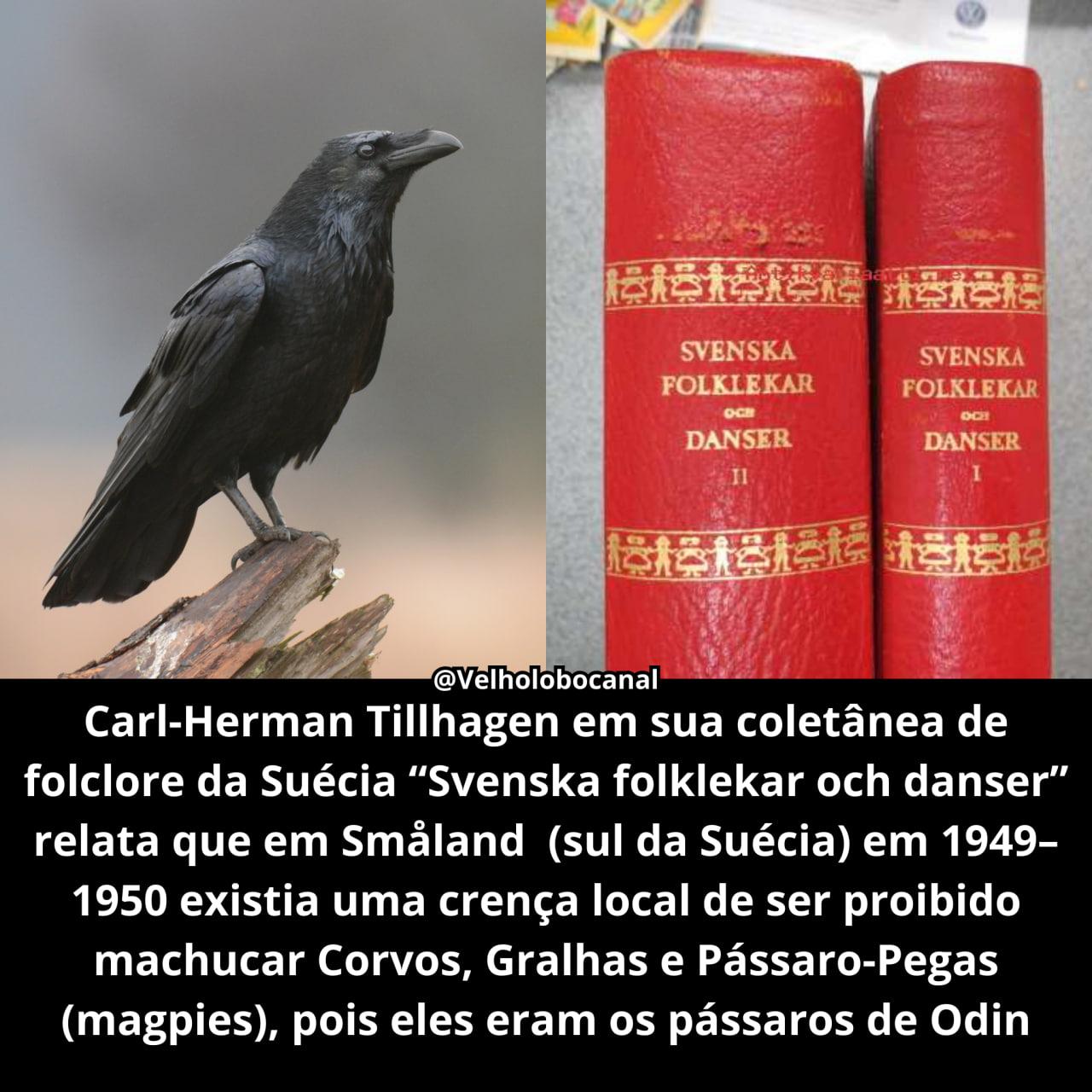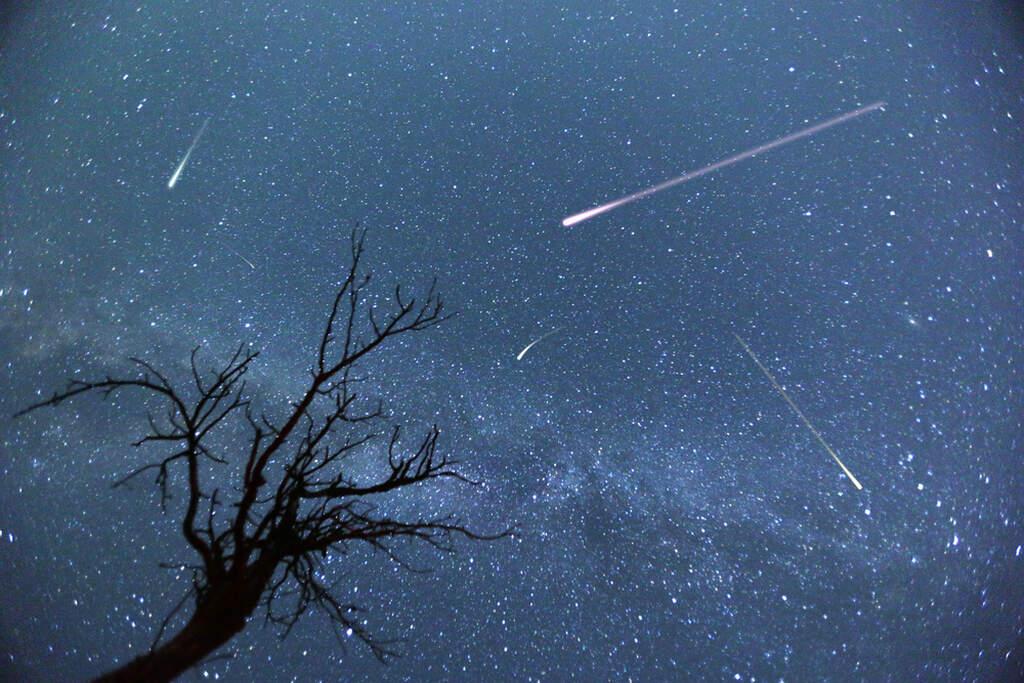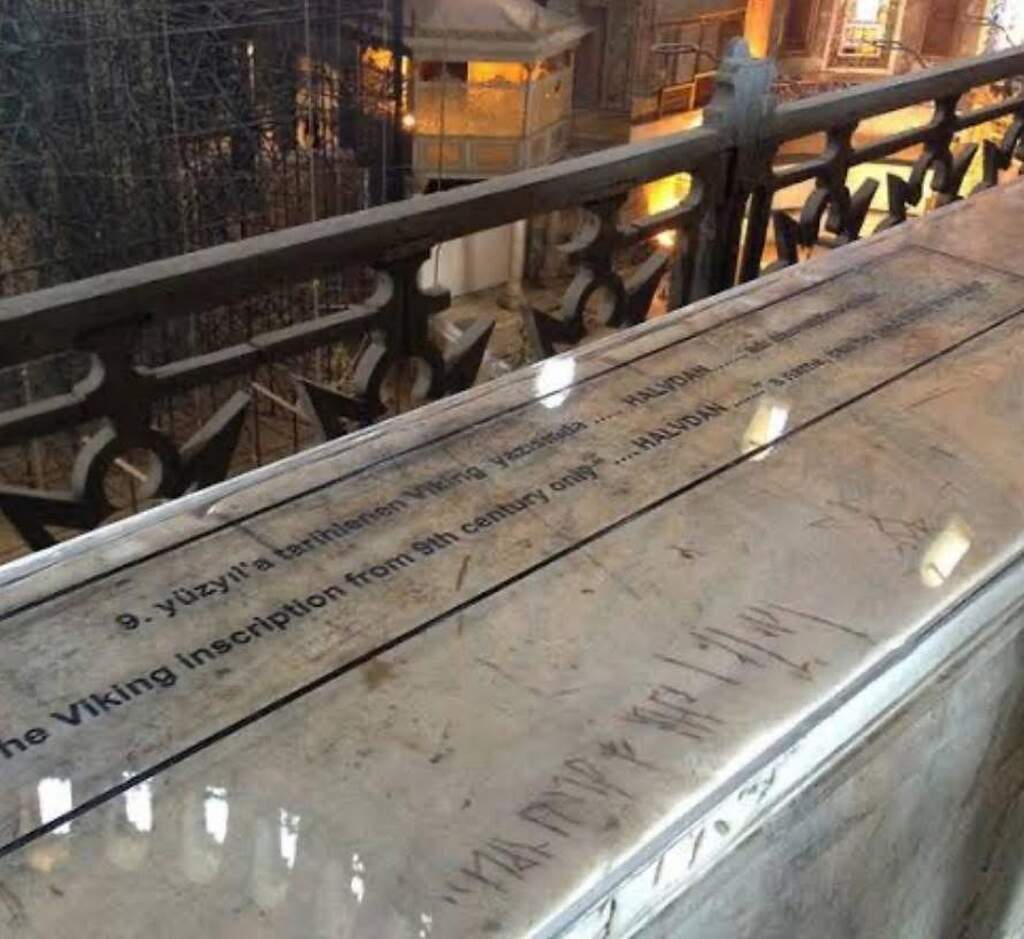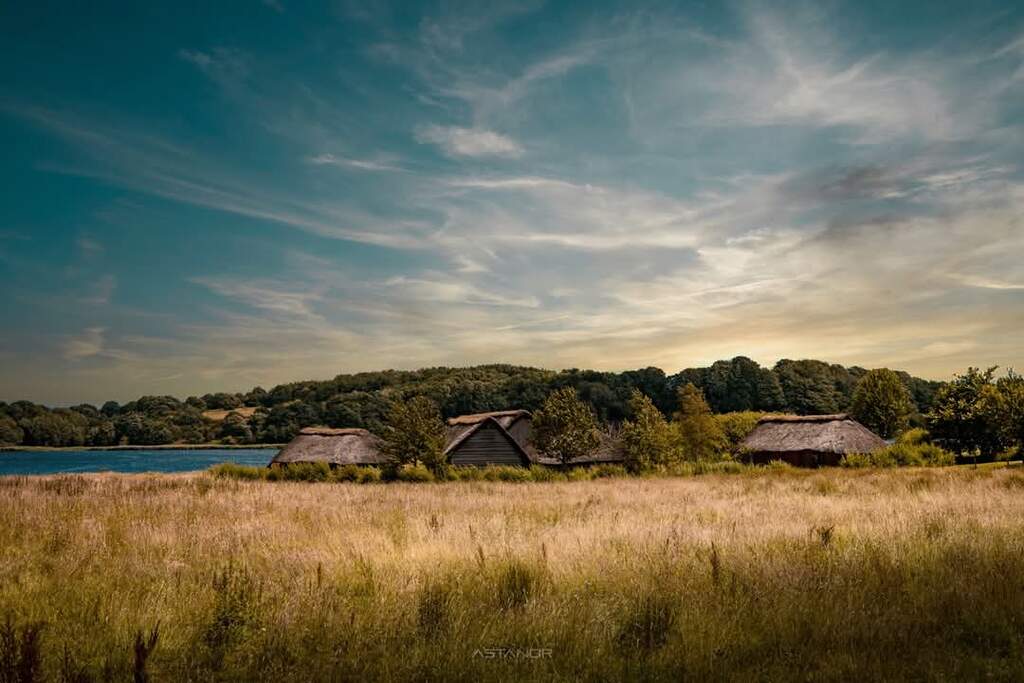The Egtved Girl From Denmark.
I have visited her grave several times over the years and seen her at the national museum as well
The Egtved Girl is one of the best-known figures from prehistory.
One summer’s day in 1370 BC she was buried in an oak coffin that was covered by the barrow Storehøj near Egtved, west of Vejle. Although not much is left of the Egtved Girl, her tale is a captivating story of the Bronze Age people.
Of the girl herself only hair, brain, teeth, nails and a little skin remain. Her teeth reveal that she was 16-18 years old when she died. On her body she wore a short tunic and a knee-length skirt made of cords. A belt plate of bronze decorated with spirals lay on her stomach. She also had a comb made of horn with her in the grave, attached to her belt. Around each arm was a ring of bronze and she had a slender ring in her ear. By her face lay a small box of bark with a bronze awl and the remains of a hair net. At the feet of the Egtved Girl a small bucket of bark had been placed, which once contained a type of beer. There was also a small bundle of clothing with the cremated bones of a 5-6-year-old child. A few bones from the same child were found in the bark box. The Egtved Girl saw the light of day again when her grave was excavated in 1921 – almost 3500 years later.
The Egtved Girl’s grave
When the Egtved Girl’s barrow was excavated in 1921, it was only a shadow of its former self. Earth and materials had been removed from it. Nevertheless there was a well-preserved grave in the eastern part of the mound. The Egtved Girl lay in an oak coffin. This was a hollowed-out, stripped oak trunk. One half functioned as a coffin and the other as its lid.
Everything lay in the coffin as it had done at the burial almost 3500 years ago. Before the Egtved Girl was laid in the coffin it had been lined with a cow skin. She was carefully laid with her grave goods on the soft skin. Afterwards she was covered with a woollen blanket and the coffin was closed. Almost 3500 years later, when the coffin was opened again, there was not much left of the Egtved Girl herself. The cow skin she lay on had also decomposed. The skin had rotted away and only the hair was preserved. However, in these hairs the contours of her body could be seen. One can still see today how the weight of the dead girl’s body pressed the hairs down. A yarrow flower was laid on the edge of the coffin before the lid was put on. The flower reveals that the Egtved Girl was laid in her grave in the summertime.
Human sacrifices?
In the Egtved Girl’s grave lay a bundle containing the burnt bones of a 5-6-year-old child. Given the Egtved Girl’s age it cannot have been her own child. Perhaps it was a child who had been sacrificed? From another of the female graves of the Bronze Age we also know of a possible human sacrifice. South of Skelde at Broagerland in Southern Jutland a female grave from the Early Bronze Age was investigated in the 1980s. The body of a woman with fine grave goods was found. At the foot end lay burnt bones from an adult – perhaps her personal slave who was killed and cremated when the woman died? Possible human sacrifices are known from a few contemporary graves of the Early Bronze Age.
Cord skirts and rituals
The Egtved Girl was dressed in a striking cord skirt. It went down to her knees, was wound twice around her waist and was 38 cm long. This kind of skirt was in use throughout the Bronze Age. Some small female figures of bronze from Grevensvænge, Zealand, are also dressed in cord skirts. It has been suggested that the figures represent rituals that were performed at the cultic feasts of the Bronze Age. The women who were dressed in cord skirts may have performed ritual dances. Perhaps the Egtved Girl also took part in dancing rituals.
The Egtved Girl’s beer
In the Egtved Girl’s coffin a bark bucket was found. At the bottom lay a thick brown deposit. When the contents of the bucket were analysed it became clear that it had contained a fermented drink – probably beer sweetened with honey. The drink was made from cowberries or cranberries. Wheat grains, remains of bog myrtle and large quantities of pollen (including lime pollen) were also found.
Pollen is the "fingerprint" of plants and with the aid of careful analysis it is possible to identify the plants that the drink contained.
Source: The national museum of Denmark.
#denmark #egtved
I have visited her grave several times over the years and seen her at the national museum as well
The Egtved Girl is one of the best-known figures from prehistory.
One summer’s day in 1370 BC she was buried in an oak coffin that was covered by the barrow Storehøj near Egtved, west of Vejle. Although not much is left of the Egtved Girl, her tale is a captivating story of the Bronze Age people.
Of the girl herself only hair, brain, teeth, nails and a little skin remain. Her teeth reveal that she was 16-18 years old when she died. On her body she wore a short tunic and a knee-length skirt made of cords. A belt plate of bronze decorated with spirals lay on her stomach. She also had a comb made of horn with her in the grave, attached to her belt. Around each arm was a ring of bronze and she had a slender ring in her ear. By her face lay a small box of bark with a bronze awl and the remains of a hair net. At the feet of the Egtved Girl a small bucket of bark had been placed, which once contained a type of beer. There was also a small bundle of clothing with the cremated bones of a 5-6-year-old child. A few bones from the same child were found in the bark box. The Egtved Girl saw the light of day again when her grave was excavated in 1921 – almost 3500 years later.
The Egtved Girl’s grave
When the Egtved Girl’s barrow was excavated in 1921, it was only a shadow of its former self. Earth and materials had been removed from it. Nevertheless there was a well-preserved grave in the eastern part of the mound. The Egtved Girl lay in an oak coffin. This was a hollowed-out, stripped oak trunk. One half functioned as a coffin and the other as its lid.
Everything lay in the coffin as it had done at the burial almost 3500 years ago. Before the Egtved Girl was laid in the coffin it had been lined with a cow skin. She was carefully laid with her grave goods on the soft skin. Afterwards she was covered with a woollen blanket and the coffin was closed. Almost 3500 years later, when the coffin was opened again, there was not much left of the Egtved Girl herself. The cow skin she lay on had also decomposed. The skin had rotted away and only the hair was preserved. However, in these hairs the contours of her body could be seen. One can still see today how the weight of the dead girl’s body pressed the hairs down. A yarrow flower was laid on the edge of the coffin before the lid was put on. The flower reveals that the Egtved Girl was laid in her grave in the summertime.
Human sacrifices?
In the Egtved Girl’s grave lay a bundle containing the burnt bones of a 5-6-year-old child. Given the Egtved Girl’s age it cannot have been her own child. Perhaps it was a child who had been sacrificed? From another of the female graves of the Bronze Age we also know of a possible human sacrifice. South of Skelde at Broagerland in Southern Jutland a female grave from the Early Bronze Age was investigated in the 1980s. The body of a woman with fine grave goods was found. At the foot end lay burnt bones from an adult – perhaps her personal slave who was killed and cremated when the woman died? Possible human sacrifices are known from a few contemporary graves of the Early Bronze Age.
Cord skirts and rituals
The Egtved Girl was dressed in a striking cord skirt. It went down to her knees, was wound twice around her waist and was 38 cm long. This kind of skirt was in use throughout the Bronze Age. Some small female figures of bronze from Grevensvænge, Zealand, are also dressed in cord skirts. It has been suggested that the figures represent rituals that were performed at the cultic feasts of the Bronze Age. The women who were dressed in cord skirts may have performed ritual dances. Perhaps the Egtved Girl also took part in dancing rituals.
The Egtved Girl’s beer
In the Egtved Girl’s coffin a bark bucket was found. At the bottom lay a thick brown deposit. When the contents of the bucket were analysed it became clear that it had contained a fermented drink – probably beer sweetened with honey. The drink was made from cowberries or cranberries. Wheat grains, remains of bog myrtle and large quantities of pollen (including lime pollen) were also found.
Pollen is the "fingerprint" of plants and with the aid of careful analysis it is possible to identify the plants that the drink contained.
Source: The national museum of Denmark.
#denmark #egtved
The Egtved Girl From Denmark.
I have visited her grave several times over the years and seen her at the national museum as well
The Egtved Girl is one of the best-known figures from prehistory.
One summer’s day in 1370 BC she was buried in an oak coffin that was covered by the barrow Storehøj near Egtved, west of Vejle. Although not much is left of the Egtved Girl, her tale is a captivating story of the Bronze Age people.
Of the girl herself only hair, brain, teeth, nails and a little skin remain. Her teeth reveal that she was 16-18 years old when she died. On her body she wore a short tunic and a knee-length skirt made of cords. A belt plate of bronze decorated with spirals lay on her stomach. She also had a comb made of horn with her in the grave, attached to her belt. Around each arm was a ring of bronze and she had a slender ring in her ear. By her face lay a small box of bark with a bronze awl and the remains of a hair net. At the feet of the Egtved Girl a small bucket of bark had been placed, which once contained a type of beer. There was also a small bundle of clothing with the cremated bones of a 5-6-year-old child. A few bones from the same child were found in the bark box. The Egtved Girl saw the light of day again when her grave was excavated in 1921 – almost 3500 years later.
The Egtved Girl’s grave
When the Egtved Girl’s barrow was excavated in 1921, it was only a shadow of its former self. Earth and materials had been removed from it. Nevertheless there was a well-preserved grave in the eastern part of the mound. The Egtved Girl lay in an oak coffin. This was a hollowed-out, stripped oak trunk. One half functioned as a coffin and the other as its lid.
Everything lay in the coffin as it had done at the burial almost 3500 years ago. Before the Egtved Girl was laid in the coffin it had been lined with a cow skin. She was carefully laid with her grave goods on the soft skin. Afterwards she was covered with a woollen blanket and the coffin was closed. Almost 3500 years later, when the coffin was opened again, there was not much left of the Egtved Girl herself. The cow skin she lay on had also decomposed. The skin had rotted away and only the hair was preserved. However, in these hairs the contours of her body could be seen. One can still see today how the weight of the dead girl’s body pressed the hairs down. A yarrow flower was laid on the edge of the coffin before the lid was put on. The flower reveals that the Egtved Girl was laid in her grave in the summertime.
Human sacrifices?
In the Egtved Girl’s grave lay a bundle containing the burnt bones of a 5-6-year-old child. Given the Egtved Girl’s age it cannot have been her own child. Perhaps it was a child who had been sacrificed? From another of the female graves of the Bronze Age we also know of a possible human sacrifice. South of Skelde at Broagerland in Southern Jutland a female grave from the Early Bronze Age was investigated in the 1980s. The body of a woman with fine grave goods was found. At the foot end lay burnt bones from an adult – perhaps her personal slave who was killed and cremated when the woman died? Possible human sacrifices are known from a few contemporary graves of the Early Bronze Age.
Cord skirts and rituals
The Egtved Girl was dressed in a striking cord skirt. It went down to her knees, was wound twice around her waist and was 38 cm long. This kind of skirt was in use throughout the Bronze Age. Some small female figures of bronze from Grevensvænge, Zealand, are also dressed in cord skirts. It has been suggested that the figures represent rituals that were performed at the cultic feasts of the Bronze Age. The women who were dressed in cord skirts may have performed ritual dances. Perhaps the Egtved Girl also took part in dancing rituals.
The Egtved Girl’s beer
In the Egtved Girl’s coffin a bark bucket was found. At the bottom lay a thick brown deposit. When the contents of the bucket were analysed it became clear that it had contained a fermented drink – probably beer sweetened with honey. The drink was made from cowberries or cranberries. Wheat grains, remains of bog myrtle and large quantities of pollen (including lime pollen) were also found.
Pollen is the "fingerprint" of plants and with the aid of careful analysis it is possible to identify the plants that the drink contained.
Source: The national museum of Denmark.
#denmark #egtved






